3. Sensation and Perception
1/53
There's no tags or description
Looks like no tags are added yet.
Name | Mastery | Learn | Test | Matching | Spaced |
|---|
No study sessions yet.
54 Terms
Veridical?
Is perception _________?
Does our perception perfectly match reality?
We often perceive things that do not exist
We misperceive or even fail to perceive things that do exist
Perception does not provide an exact picture or representation of reality
We look, but don’t see!
Ex: The Door study (link in powerpoint)
Sensation
________________ - The reception of stimulation from the environment, and its initial encoding into the nervous system.
All sensory info is a physical characteristic of the world
Ex: Colors of my Playboy blanket, the speaker and sound waves vibrating and hitting the eardrums
Perception
______________ - The process of interpreting and understanding sensory information.
Not necessarily physical
Ex: The implications of having a PLAYBOY blanket (am I promiscuous, what are societal implications etc.…)
Vision
Don’t worry about details, most important is the pupil, retina (contains the rods and cones)
______ - Light is reflected off the many cells at the back of the eye
Many-to-one synapses compress information
Peripheral rods and cones to bipolar cells
Bipolar to Ganglion cells
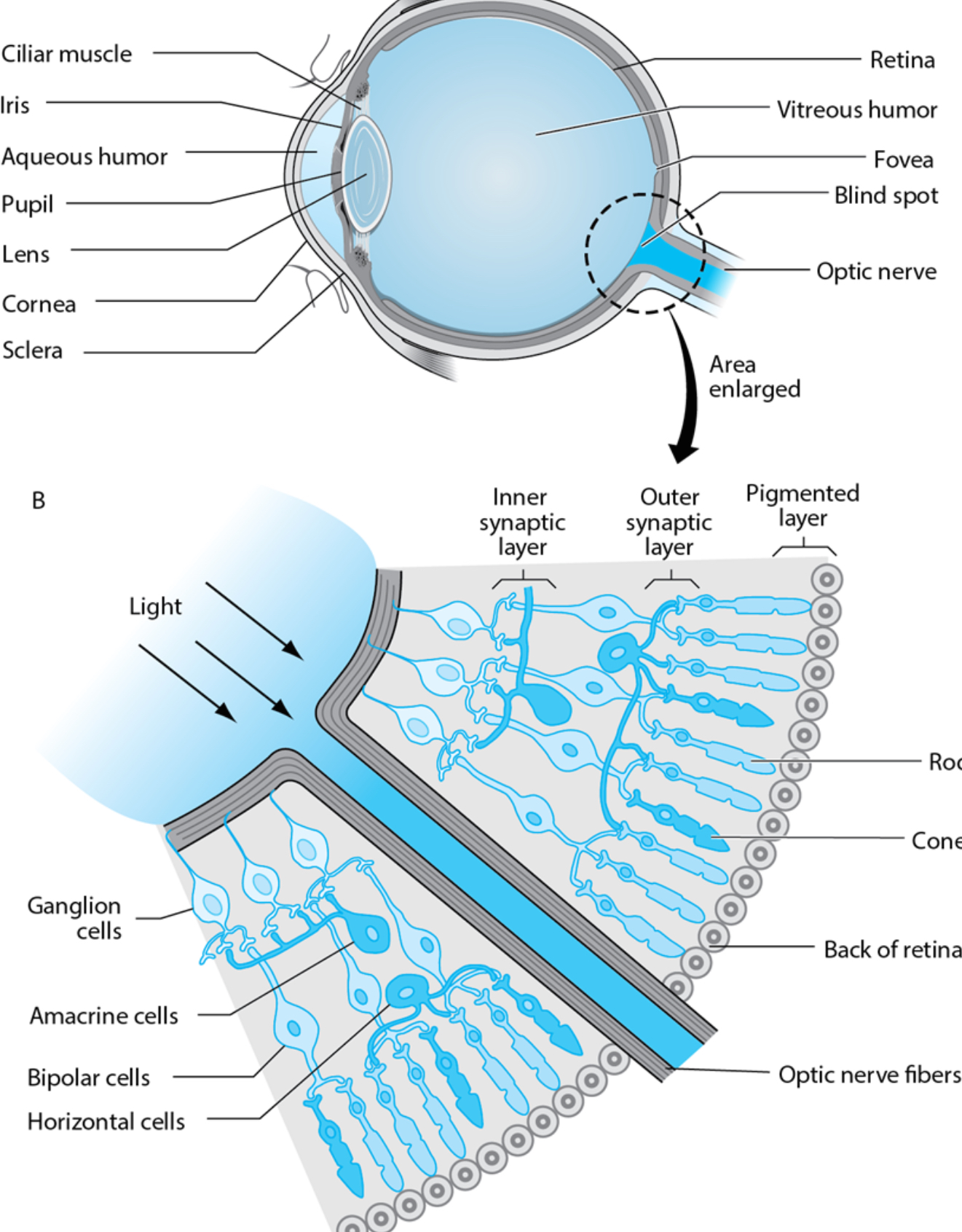
Visual pathways
Ipsilateral and contralateral sides

Visual compression
________________ - Transformation of information that both analyzes and summarizes the original sensory input
Applies to all senses (including vision)
Summarized record of stimulus
Saccades
Gathering visual info
____________ - eyes sweep from one point to another in fast (jerky) movements
Eye does NOT encode visual info
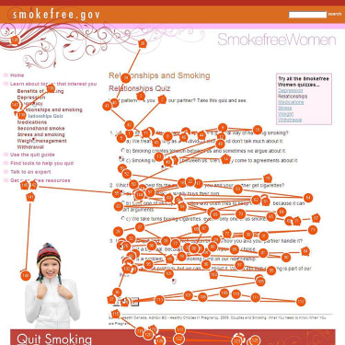
Fixations
Gathering visual info
___________ - The pause during which the eye is almost stationary and is taking in visual information
Info is TAKEN IN
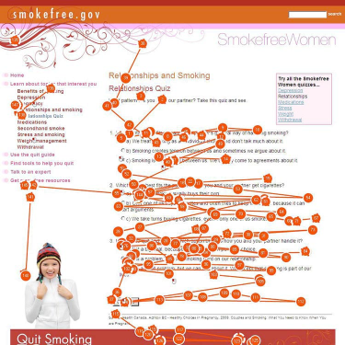
Change blindness
Gathering visual info
________________ - Failure to notice changes in visual stimuli when those changes occur during a saccade
People often fail to notice changes in a visual scene
Video in the powerpoint
Measuring eye movements
Gathering visual info
______________ - Eye trackers have been used to measure the movements of the eye.
Areas of Research:
Perception
Attention
Processing facial features
Reading
Eye Trackers:
Light source (infrared)
Camera/sensor

Visual attention
Gathering visual info
_______________ - The act of attending to some stimulus with our visual system
Capacity problem
Select relevant information
Filter out irrelevant information
Competition for said _______
Must be interruptible, but not too interruptible.
Inattention blindness
Gathering visual info → visual attention
_________________ - we sometimes fail to see an object we are looking at directly because attention is directed elsewhere
Ionic memory/visual sensory memory
Two names of sensory memory
______________ - Temporary visual buffer that holds visual information for brief periods of time (250–500 ms)
The visual sensory register
Visual persistence
Visual sensory memory (ionic memory)
________________ - apparent persistence of a visual stimulus beyond its physical duration.
Ex: Lightning strikes, or when you stare at a letter on your phone too long…
Initial storage and duration of VSM
Ionic/visual sensory memory
__________________ - At first— 250-500 milliseconds, operates without conscious awareness
Sperling conducted several studies aimed at detailing the amount of storage in and duration of iconic memory
Tachistoscope
Sperling’s experiment
IMPORTANT FOR MIDTERM
Ionic/visual sensory memory → initial storage and duration
_____________ - results of these experiments suggested that the human visual system is capable of retaining information even if the exposure is very brief. The reason so few letters could be recalled,
Because this type of memory is so fleeting.
Whole Report Condition: participants had to free recall the letters (Recall as many as they could from the whole array)
Partial Report Condition: participants were cued to recall either the top, middle, or bottom row of the array.

Whole report condition
IMPORTANT FOR MIDTERM
Ionic/visual sensory memory → initial storage and duration → Sperling’s experiment
_____________ - participants had to free recall the letters. They recalled 37% accurately, 4-5 items on avg. (Recall as many as they could from the whole array)
Varying visual exposure (letter array) from 5-500 ms did not change results
Shorter delay periods before the tone cue led to more accuracy
Span of apprehension
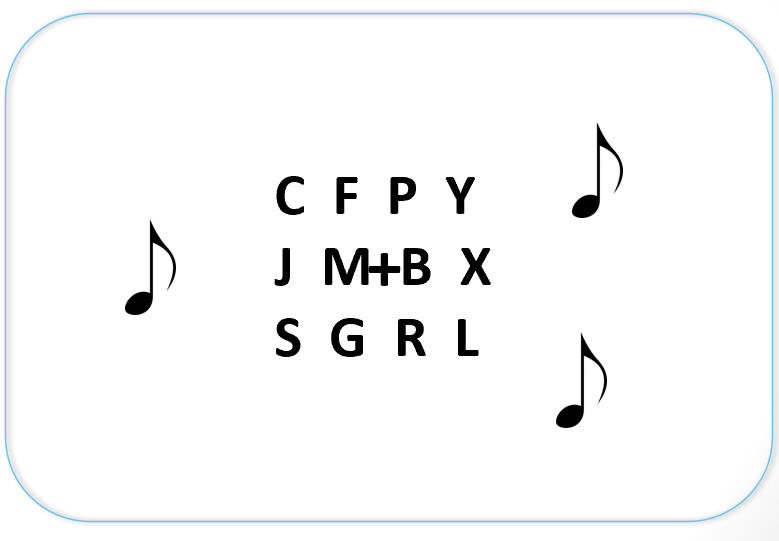
Partial report condition
IMPORTANT FOR MIDTERM
Ionic/visual sensory memory → initial storage and duration → Sperling’s experiment
______________ - participants were cued to recall either the top, middle, or bottom row of the array — recall accuracy was 76%.
Infer that ANY row would have been the same
High tone – top row
Medium tone – middle row
Low tone – bottom row
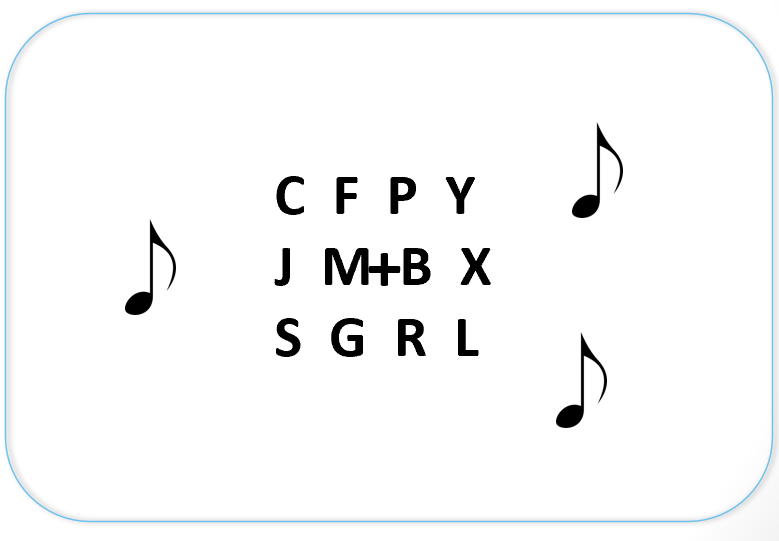
Span of apprehension
IMPORTANT FOR MIDTERM
Ionic/visual sensory memory → initial storage and duration → Sperling’s experiment → whole report condition results
_____________ - the number of items recallable after any short display
…very short
IMPORTANT FOR MIDTERM
Ionic/visual sensory memory → initial storage and duration → Sperling’s experiment → results
Visual sensory memory (VSM)/Ionic memory is…. _______________
Decay
IMPORTANT FOR MIDTERM
Ionic/visual sensory memory → initial storage and duration → Sperling’s experiment → results
______________ - caused forgetting, which was caused by loss of info over time.
Carefully controlled by interference.
Sperling argued for decay because the sensory memory for the visual stimulus seemed to fade
Problem: Ecological validity
IMPORTANT FOR MIDTERM
Ionic/visual sensory memory → initial storage and duration → Sperling’s experiment → results
____________ - The extent to which findings can be generalized to real world settings in which people think and act
Interference
IMPORTANT FOR MIDTERM
Ionic/visual sensory memory → forgetting (Averbach & Coriell)
_______________ - a memory phenomenon that occurs when new information is confused with old information, making it harder to remember things
Averbach & Coriell demonstrated interference
The idea that later stimuli replace a previous stimulus in sensory memory, thus preventing encoding, and thus memory.

Backward masking
Ionic/visual sensory memory → interference (Averbach & Coriell)
_______________ - When a later visual stimulus affects perception of an earlier one
Icon
The early parts of a fixation
___________ - the visual image that resides in iconic memory— the contents of iconic memory, quickly lost
Rayner et al. (1981) → Eye-tracker study - People fixated on a word for 50 ms, then word was replaced by irrelevant stimulus for 175 ms.
Reading unaffected; some people didn’t notice the change!
Pattern recognition
________________ - Not instant, although sometimes very fast. Automatic & spontaneous
Principles and Models of Pattern Recognition:
Gestalt Grouping Principles
Template Approach
Feature Detection
Conceptually-Driven Pattern Recognition
Gestalt theory
Pattern recognition
______________ - Focused on the whole rather than the individual parts
Descriptive, not explanatory
Principle of Simplicity
Principle of Simplicity
Pattern recognition → Gestalt Theory
______________ - when we have sensory input our perceptual system usually tries to create a percept that is:
Simple
Orderly
Stable
Law of proximity
Pattern recognition → Gestalt Theory
_____________ - Objects which are close together form a group
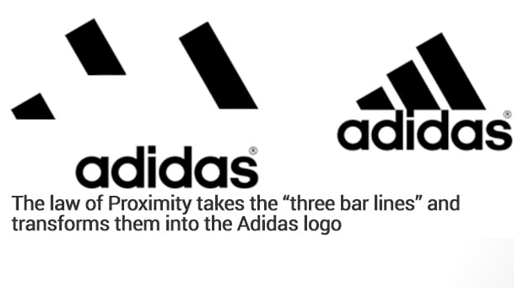
Law of similarity
Pattern recognition → Gestalt Theory
____________ - Similar visual elements form a group
i.e., similar things are grouped together
Shape, colour, etc.

Law of closure
Pattern recognition → Gestalt Theory
____________ - Objects are perceived as whole, even if they are not complete

Law of good continuation
Pattern recognition → Gestalt Theory
_____________ - We tend to perceive objects as forming smooth continuous patters.
A.K.A. Law of Continuity

Law of symmetry
Pattern recognition → Gestalt Theory
________________ - Objects that are around a center point form a group

Law of figure-ground segregation
Pattern recognition → Gestalt Theory
_________________ - Tendency to structure the visual field into two parts: a figure and a background
Bistable percepts: stimuli can be perceived in one of two different ways.

Template approach
Pattern recognition
________________ - Patterns are not identical from one time to another
Categorization by templates: Stored models of all categorizable patterns
Problems: Variability of patterns that we can recognize, learning
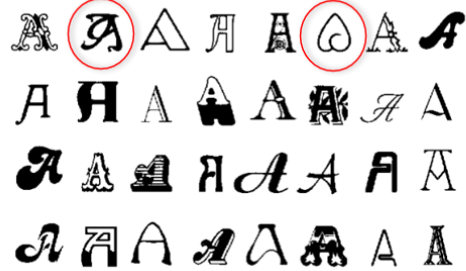
Feature detection
Pattern recognition
_____________- appear in combinations
Ex: “A H L T” all have a horizontal line as a feature: —
Perceptual system matches elemental features, rather than matching patterns to templates
Pandemonium model
IMPORTANT FOR MIDTERM
Pattern recognition → feature recognition
_________________ - NOT a connectionist model . On exams will be asked to explain connectionism– do NOT use this as an example
Data/image demons: taking IN the info
Computational demons: Different patterns have different combinations or overlapping combos – the “demons” yell out, “hey I have a match!”
Cognitive demons: looking for EXACT matches in the full pattern- the “loudest” one is the one who has the closest match
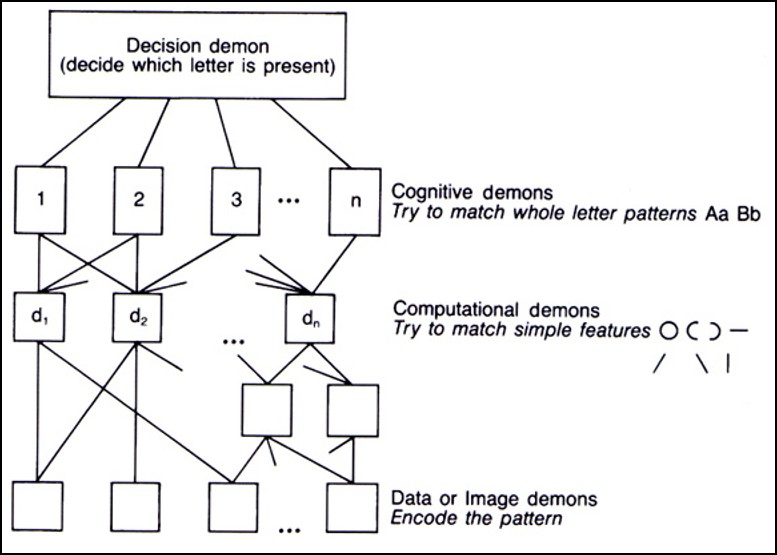
Pros of Pandemonium model
IMPORTANT FOR MIDTERM
Pattern recognition → feature recognition → pandemonium model
______________
Neurological evidence -> we do recognize patterns in basic features
Parallel Processing -> multiple things happening at once in this model
Perception is a process of problem-solving
Note: Doesn’t mean it’s a logical process (Like math), but it’s working with partial, incomplete info
Cons of Pandemonium model
IMPORTANT FOR MIDTERM
Pattern recognition → feature recognition → pandemonium model
_________________
Bottom-up processing system
No explanation for top-down effects -> for ambiguous stimulus (like certain fonts) we are using our existing knowledge/context in the environment to make connections
Conceptually-driven processing
Pattern recognition
________________ - AKA top-down processing, context and higher-level knowledge influence lower-level processes
Pre-existing knowledge influences our perceptions. In pic– event and went are the EXACT same image with the same features, only explained by top-down processing

Data-driven processing
Pattern recognition
_____________________ - AKA bottom-up processing— processing is driven by the stimulus pattern—the incoming data (especially the features)
E.g., Pandemonium Model
Connectionism
__________________ - theoretical and computational approach used to understand the ways in which human cognition might perform its mental operations.
A representation of how we think
Connections are pathways between units
Within and between levels.
Massively interconnected
Model resembles the way the brain operate

Connectionism basics
ON EXAM
Connectionism/connectionist modelling
Complex mental operations are the combined effects of massive parallel processing
Parallel Distributed Processing (PDP) models
Networks are composed of three levels of units
Input units: Basic units that receive inputs from the environment
Ex: Basic visual detectorsHidden units: Internal units; one step removed from input and output
Ex: Things we cant see as clearly- info from top level to guide what we don’t get
Output units: Units that report the system’s response
Connections between units are positive or negative
Positive connection weights pass excitatory message to the connected unit.
Negative connection weights pass inhibitory message to the connected unit
NOT action potential’s “all or nothing”
Connection weights vary as a function of “training” (learning algorithms)
Connectionism is meant to be similar to how the brain functions
Still not exactly the same, nodes aren’t the same as neurons– neurons aren’t for each word or letter
Connectionism example
Connectionism
____________________ - Moreso represents nonconscious processes
A stronger weight-> +0.9 as it FITS the Q (excitatory)
Top-down knowledge can affect the “hidden units” stage, also affected by parallel processes. If you have ST_Y recognized, you will fill in the blanks– its likely a vowel for the word to make sense
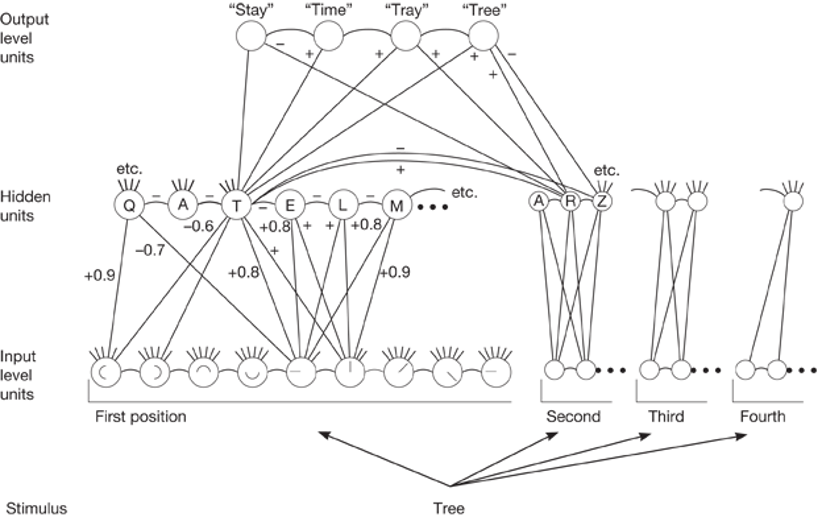
Errors and ambiguity in visual perception
_______________ - Perception does not perfectly coincide with reality: it can mislead or fail us
Autokinetic movement – you see movement where there isn’t any
Agnosia (apperceptive and associative)
Prosopagnosia
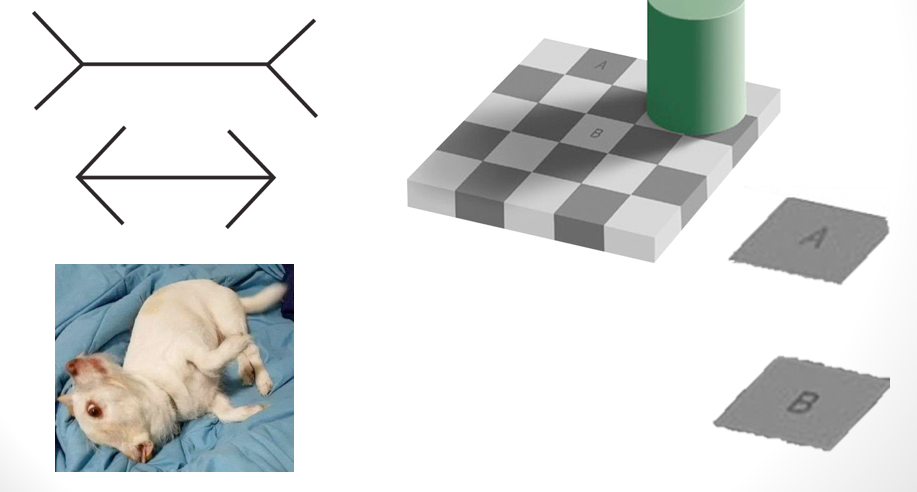
Agnosia
Errors and ambiguity in visual perception
______________ - A failure or deficit in recognizing objects
Not a result of dementia
Can often recognize objects with other sensory modalities
Prosopagnosia
Apperceptive agnosia
Associative agnosia
Prosopagnosia
_________________ - deficit in recognizing faces
“The Man Who Mistook His Wife for a Hat”
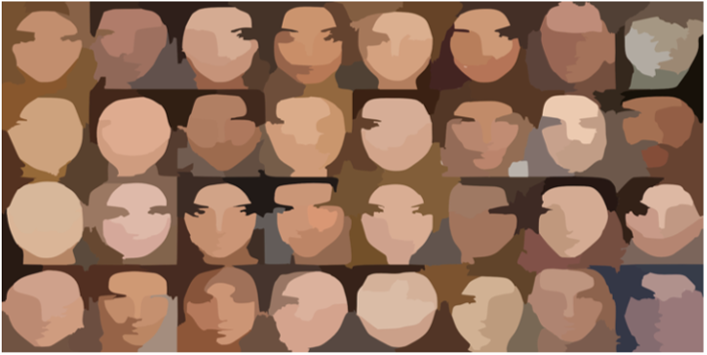
Apperceptive agnosia
Errors and ambiguity in visual perception
________________ - deficit in recognizing pattern
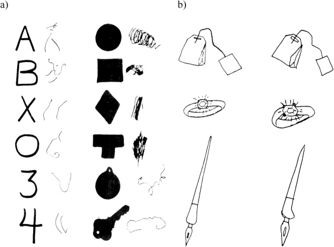
Associative agnosia
Errors and ambiguity in visual perception
______________ - deficit in associating meaning and a pattern

Auditory sensory memory/echoic memory
Two types of sensory memory
_________________- A brief memory system that receives auditory stimuli and preserves them for some amount of time.
Sound is a temporal event
Initial storage/duration
Echoic memory/auditory sensory memory
_____________ - Darwin, Turvey, and Crowder (1972) Simultaneous presentation of 3 lists of items through headphones at different spatial locations
A light indicates which set to recall
RESULTS:
Replicated Sperling's results
At short delays, partial>whole report
Max # of times recalled was 5 and echo lasted for 4 sec
Information was held in the echo much longer than it was held in the icon
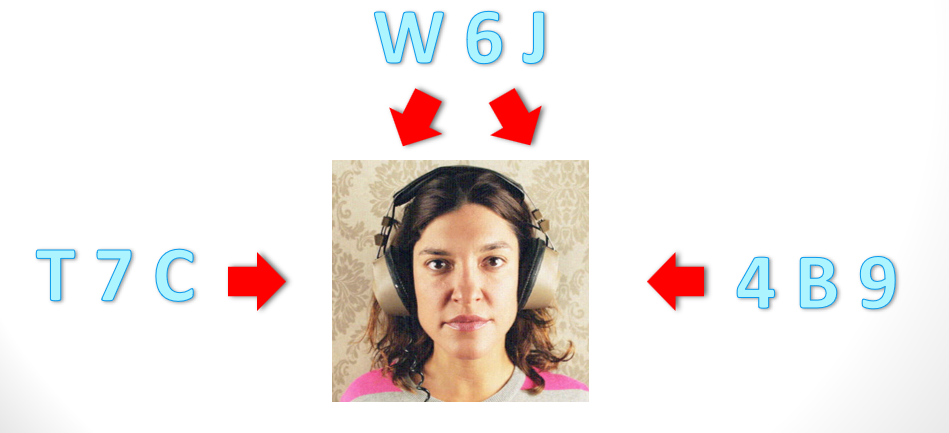
Auditory persistence and erasure
Echoic memory/auditory sensory memory
______________ - Crowder & Morton (1969). Presented 9 digits visually (2 digits per second)
3 Conditions: Silent vocalization, active vocalization, passive vocalization
Silent: Reading silently, saying it in your head
Active: Read aloud, and name the numbers/letter
Passive: Read aloud by a recording
Results: For the last 3 items in the list, the active and passive vocalization groups made fewer errors
Interpretation: active & passive groups could rely on echoic memory.
Suffix Effect: inferior recall of the end of the list in the presence of an additional, meaningful, non-list auditory stimulus.
Auditory pattern recognition
Echoic memory/auditory sensory memory
Templates: The problem of invariance: the sounds of speech are not invariant from one time to another
Feature Detection: Bottom-up only, doesn’t account for top-down effects
Conceptually Driven Processing
Pollack & Picket (1964): Presented words out of context
Two groups: one got recordings; one isolated word
Warren & Warren
Echoic memory/auditory sensory memory
______________ - participants are able to fill in gaps based on context.
